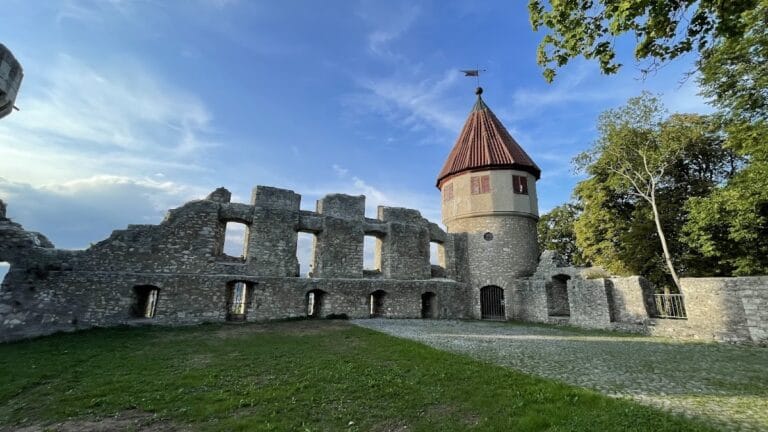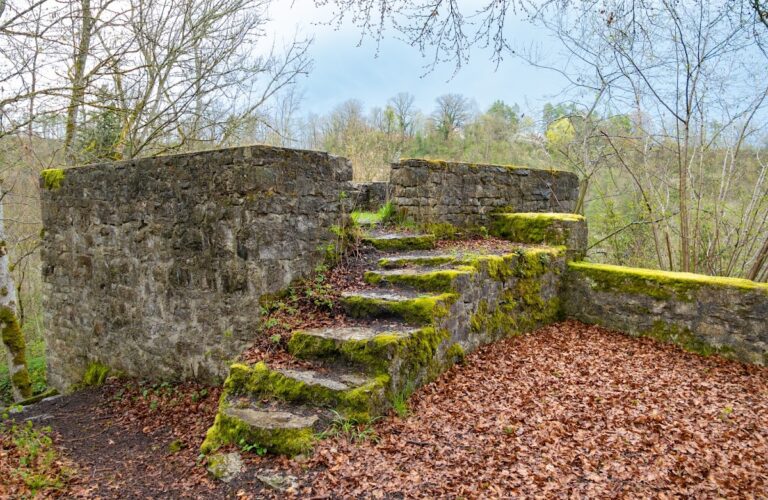Burgruine Granegg: A Medieval Castle Ruin near Egesheim, Germany
Visitor Information
Google Rating: 4.8
Popularity: Very Low
Google Maps: View on Google Maps
Country: Germany
Civilization: Unclassified
Remains: Military
History
Burgruine Granegg is a castle ruin located near the municipality of Egesheim in present-day Germany. Constructed in the 11th century by the noble family of Michelstein, it reflects medieval European fortification efforts in the region.
The earliest recorded mention of the castle dates to 1102 when Reginhard von Michelstein appeared as a witness on a donation document. During the following centuries, the castle remained associated with the Michelstein family, who lent their name to the site, known as Michelstein castle, up until the 16th century. The family’s last documented member is Agnes von Michelstein, mentioned in 1305.
The castle endured significant damage in the mid-14th century. An earthquake in 1356 partially destroyed the structure, and further harm was inflicted in 1377 when forces from the imperial city of Rottweil attacked it during the first major city war, a regional conflict that also devastated the nearby village of Bubsheim. This period marked the beginning of a series of ownership changes and transformations for the site.
In 1483, Duke Sigmund of Austria granted the ruined castle as a fief to Bertold von Balgheim. Shortly after, in 1489, control passed to the Stain von Steinegg family. From 1536 until 1792, the ruin belonged to the Ifflinger family of Granegg. It was during their stewardship that the castle came to be known as Granegg, a name that replaced its original designation.
The late 18th century saw further transition when Karl-Alexander Ifflinger sold the ruin and its estates in 1792 to brothers Emanuel and Michael Levi from Hechingen for 95,000 gulden. About forty years later, in 1831, Karl von Ifflinger reacquired the property. By the early 20th century, ownership had shifted again: in 1923, the Catholic church administration in Rottweil took possession of the tower ruins. This ecclesiastical stewardship was eventually succeeded in 1931 when the Swabian Alb Association assumed responsibility and began efforts to preserve the remains.
Remains
Burgruine Granegg occupies a rocky outcrop known as the Schlossfelsen, standing at an elevation of 921 meters above sea level. This location west of Egesheim offered a naturally defensible position, characteristic of rock castles built upon elevated terrain. The existing ruins illustrate a construction style utilizing rough rubble stone alongside sections of bossage ashlar, a form of masonry where stones are worked with a raised face and smooth edges to fit tightly together.
Among the surviving structures, remnants of the bergfried, or main defensive tower, are particularly notable. The bergfried served as a fortified refuge and stronghold within medieval castles. Although the tower suffered damage over the centuries, parts remain standing, providing a tangible connection to the castle’s original form.
Other preserved elements include traces of the castle’s defensive walls, which reveal the foundations and building techniques used during the 11th century and subsequent rebuilds. The ruins, while fragmented, clearly mark the castle’s footprint on the rocky ledge, illustrating the adaptation of medieval fortification methods to the natural landscape.
Photographic documentation shows the current condition of the ruins and the tower’s isolated remains, indicating a state of preservation that invites continued study. These materials provide visual evidence of the castle’s architectural character as it persisted through various phases of destruction and ownership change. The careful preservation efforts by recent custodians have helped maintain these features for their historical value.







